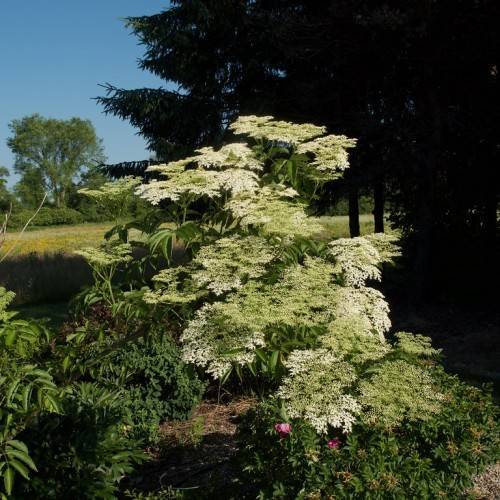
black elder
Sambucus nigra
Also Known As - European elderCycle:
Perennial
Watering:
Frequent
Hardiness Zone:
5 - 8
Flowers:
Flowers In Summer
Sun:
Full sun only if soil kept moist, Part sun/part shade
Soil:
Sandy Clay
Fruits:
Fruits In Summer Ready In
Edible:
Yes
Leaf:
Yes
Growth Rate:
Moderate
Maintenance:
High
Drought Tolerant:
Yes
Care Level:
Medium
watering
Black elder (Sambucus nigra) should be watered as needed in the summer months. Check the soil weekly and if it feels dry 1-2 inches below the surface, water the plant deeply. Avoid over-watering as this can cause root rot and other issues. In the colder months, water less often, about every 2 weeks or so. Make sure to water at the base of the plant and avoid getting the leaves wet.
sunlight
Black Elder (Sambucus nigra) requires at least 4 hours of direct sunlight each day in order to flourish. It prefers bright, indirect sunlight in the morning and afternoon hours, avoiding the high intensity of the midday sun. Ideal daily sunlight exposure for a black elder should range from 4-7 hours per day with no more than 8 hours of direct sun. The plant should also be situated in an area that it receives ample air circulation and protection from freezing temperatures during the winter months.
pruning
Black elder (Sambucus nigra) should be pruned in early spring, just as new growth begins to emerge. Pruning should be minimal and focused on removing dead or damaged branches. The best way to prune black elder is to remove 1-third of the branches each year, either by cutting down to ground level or by removing select branches into a more desired structure. Make sure to leave behind some strong, mature canes to ensure flowering and fruiting in the future. Avoid over-pruning and removing too much of the large branches or older wood. Also, avoid pruning in late summer or autumn, as these are the flowering and fruiting times.
